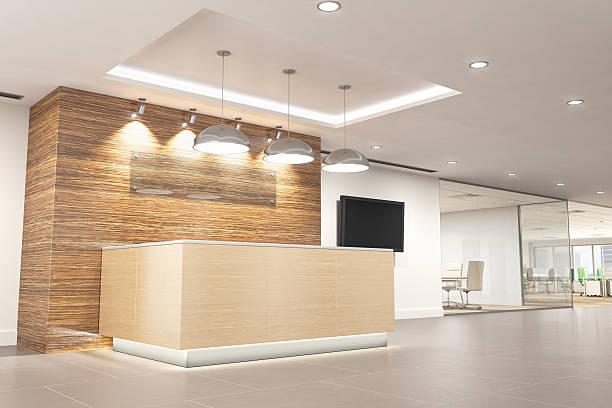Introduction to Reception Desk
As the gateway to any organization, the reception area plays a crucial role in shaping visitors’ first impressions. At the heart of this space stands the reception desk, a focal point that not only serves as a functional workstation but also embodies the ethos and identity of the business. In this article, we delve into the evolution, significance, and contemporary trends in reception desk design, exploring how it has evolved from a simple transactional counter to a statement piece that reflects the values of the organization.
Historical Evolution
The concept of the reception desk traces its roots back to ancient civilizations, where it served as a central point for communication and hospitality. Over time, the design of reception desks evolved alongside societal changes and technological advancements. From the ornate counters of Victorian-era hotels to the sleek, minimalist desks of modern corporate lobbies, the evolution reflects shifting aesthetics, functional needs, and cultural influences.
Functionality and Efficiency
At its core, the reception desk is a functional workspace designed to facilitate seamless interactions between visitors and staff. Modern reception desks are equipped with a range of features aimed at enhancing efficiency and convenience. From integrated communication systems and digital signage to storage compartments and security features, every aspect is meticulously designed to streamline operations and create a welcoming environment for visitors.
Brand Representation
Beyond its functional role, the reception desk serves as a tangible representation of the organization’s brand identity and values. Whether it’s a boutique hotel exuding luxury and sophistication or a tech startup fostering innovation and creativity, the design language of the reception desk communicates a clear message to visitors. Customization options, such as branded signage, logos, and materials, allow businesses to imprint their unique identity onto the reception area, leaving a lasting impression on guests.
Aesthetic Appeal
In addition to functionality and branding, the aesthetic appeal of the reception desk design plays a crucial role in creating a memorable experience for visitors. Design trends in reception desk aesthetics vary widely, ranging from sleek and contemporary to classic and ornate. However, regardless of the style, attention to detail, craftsmanship, and choice of materials are key factors that contribute to the overall visual impact. Warm wood finishes, elegant marble countertops, and clean lines are just a few examples of design elements that can elevate the aesthetic appeal of a reception desk.
Technology Integration
In an increasingly digital world, reception desks are embracing technology to enhance visitor experience and operational efficiency. Touchscreen displays, self-service kiosks, and digital check-in systems are becoming commonplace, allowing guests to navigate the reception process autonomously. Moreover, integrated communication systems enable seamless connectivity between reception staff and other departments, improving coordination and response times. By leveraging technology, organizations can create modern, efficient reception areas that align with contemporary expectations.
Ergonomics and Accessibility
As hubs of activity, reception desks must prioritize ergonomics and accessibility to accommodate diverse users, including visitors with disabilities. Adjustable height counters, wheelchair-friendly design elements, and intuitive layout configurations ensure that the reception area remains inclusive and welcoming to all. Additionally, ergonomic considerations extend to reception staff, with features such as anti-fatigue mats, ergonomic seating, and adequate lighting contributing to their comfort and well-being.
Sustainability and Environmental Responsibility
In an age of environmental consciousness, reception desk design is increasingly influenced by sustainability principles. Manufacturers are opting for eco-friendly materials, such as recycled wood, reclaimed metal, and low-VOC finishes, to minimize environmental impact. Moreover, modular and adaptable designs prolong the lifecycle of reception tables, reducing waste and promoting circularity. By prioritizing sustainability, organizations demonstrate their commitment to environmental responsibility while creating inviting reception spaces that resonate with eco-conscious visitors.
Conclusion
The reception desk stands as a symbolic gateway to the organization, embodying its values, aesthetics, and commitment to excellence. From its humble beginnings as a functional counter to its contemporary role as a statement piece, reception desk design has evolved in response to changing needs, technological advancements, and design trends. By prioritizing functionality, branding, aesthetics, and sustainability, organizations can create reception areas that leave a lasting impression on visitors while fostering a welcoming and efficient environment for staff and guests alike.









